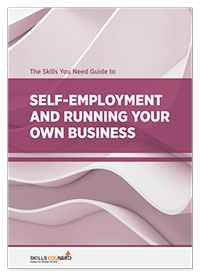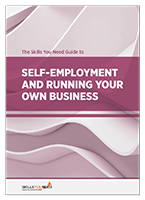Invoicing for Freelancers: What, When, and How
See also: Pricing and Charging for FreelancersAsking for money is difficult in many cultures. This is so ingrained that new freelancers often say that invoicing is one of the hardest parts of being self-employed.
For many, chasing up unpaid bills is so challenging that they might even just let a bill go unpaid rather than risk upsetting a client or getting into a confrontation.
You do this at your peril, however. It is the start of a very slippery slope. Instead, you need to remember that you have done the work, and you deserve to be paid for it.
This page is designed to help you invoice in such a way that you get paid, on time, and that you can chase up any outstanding payments relatively easily.
Contracting and Invoices
Your initial contract with your client, however informal, should set out clearly your invoicing and payment terms.
For example, you might say:
- I will invoice on completion of the work, and ask to be paid by BACS transfer within 2 weeks of the date of the invoice.
- I will invoice on the last day of the month for work done during that month, and ask to be paid by the 7th day of the next month, by either BACS transfer or PayPal.
This sets out expectations very clearly.
There is more about this in our page on Contracting for Freelancers.
Should You Ask For A Deposit?
Taking a deposit means that you have at least earned something if the client proves to be difficult and refuses payment. On the other hand, you are holding the client’s money, and what if they cancel and ask for it back again, or say that you have not delivered? It is a fine balance.
Some of the freelance websites use a system called Escrow, where the client pays the money upfront, and the website holds it until you both agree that the work is complete. This gives both of you some security.
This may therefore be a good compromise, and is a very good reason for using one of these sites.
When To Invoice
Obviously, you should invoice when you say that you will in the contract. But how do you decide what this should be?
The key is probably flexibility.
Some jobs will be short, one-off jobs, and you should probably invoice immediately on completion for those.
Other jobs will be longer, or ongoing over several weeks or months. You may therefore want to invoice each week or month, depending on the amount of money involved.
TOP TIP!
With new clients or those with a poor payment record, invoice before the amount owed is very much, and do not do any more work until you have been paid.
In other words, have a system where you invoice these clients each week, and ask to be paid immediately, before you do any further work. This means that you can be sure that you have been paid, and do not risk losing too much money if there is a problem.
The amount that you consider ‘too much’ is up to you, but certainly losing 5 days’ work is significant for any freelancer.
What about clients who will not agree that the work is finished, and keep saying that they will send more? It probably makes sense to invoice them at the end of the month, when you do your other ongoing invoicing.
You can just explain politely in an email that you are happy to do more work for them, but you do not like to have non-invoiced work outstanding for more than a month (or two, depending on the period). You are therefore sending an invoice, which you would like paid as soon as possible, and any further work can go on a new invoice later.
How To Invoice
There are a number of items that you need to include on your invoice. These are:
Your name and address. You may be worried about including your postal address, but this is often required by tax offices, so that your client’s auditors can check your tax status.
Your customer’s name and address (if possible). Check how they would like the invoice addressed, and if they need an address, or if a name is enough. If your invoice is being paid by a company or institution, or there is a question of having to claim back the costs, there may be a required format.
The date of the invoice.
A reference number for the invoice. You should ask your clients to use this as the reference on their payment as well, if possible, to help you track the payments.
Details of the work done, for which you are invoicing. You may find it easier to itemise the work on a second page, especially if there is a lot, and simply include a summary on the front page.
The date by which payment is due, and any conditions on the payment. This gives you the opportunity to follow up the bill within a reasonable period, and also makes clear whether there are any conditions (for example, you will not do any more work until you have been paid, or a later payment will incur an additional fee on the next invoice).
How you wish to be paid. Include bank account details, or other details for payment, and provide information about all the payment methods that you are prepared to accept.
A thought on payment methods
It is worth researching payment methods carefully as there may be hidden charges or conditions involved that make one or more methods non-viable for you.
For example:
- All Western Union fees are paid by the sender, making it a reliable way of receiving the required amount of money. However, you will need to check that you have somewhere locally where you can pick up money easily, as the number of offices varies in different areas.
- PayPal fees are routinely paid by the recipient. If you are going to use this method routinely, you may therefore want to add an additional amount to your invoice to cover the fees.
- Some banks charge to receive payments from abroad. You may not find any information about this until you have been charged so, again, you may wish to add a percentage to the bill to cover this.
You can always ask your clients to add a percentage to the bill if paying by particular methods (for example, PayPal).
It may also be helpful to ask clients to let you know if they need a receipt, as you will spend a lot of time doing paperwork if you provide a formal receipt for every payment. It is, of course, only polite to send a quick email acknowledging payment.
Chasing Invoices
If you set up your invoice carefully, as described above, you will also have set up the ability to chase up any unpaid bills.
For example:
- Provide a ‘payment due by’ date, and you can chase if payment is not received within 24 hours of that date, noting politely that your invoice is now overdue, and asking for payment to be paid immediately.
- Include a facility for a ‘late payment charge’ or stopping work, and you can simply carry it forward and add it to the next bill, or politely remind them that you will not be doing any more work until you have received the payment.
There are more ideas about how to chase unpaid bills in our page on Managing Ongoing Client Relationships.
Invoicing Does Not Need to Be Hard
As a freelancer, you need to learn to invoice effectively, and to chase up unpaid bills. It does not, however, need to be hard. Hopefully this page has shown how you can make the process easier.
Further Reading from Skills You Need
The Skills You Need Guide to Self-Employment and
Running Your Own Business
If you are thinking about running your own business, or already do so, but feel that you need some guidance, then this eBook is for you. It takes you through self-employment in easy steps, helping you to ensure that your business has more chance of success.
The Skills You Need Guide to Self-Employment and Running Your Own Business is the guide no new or aspiring entrepreneur can afford to be without!
Based on our popular self-employment and entrepreneurship content.


